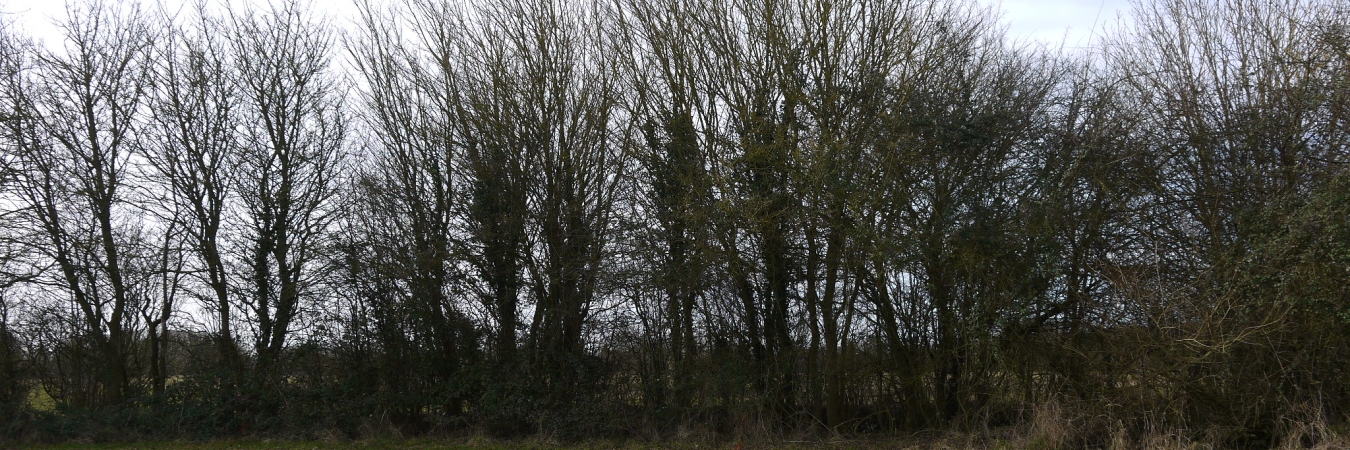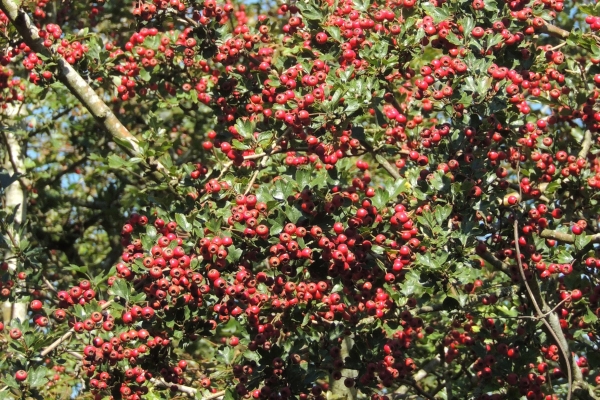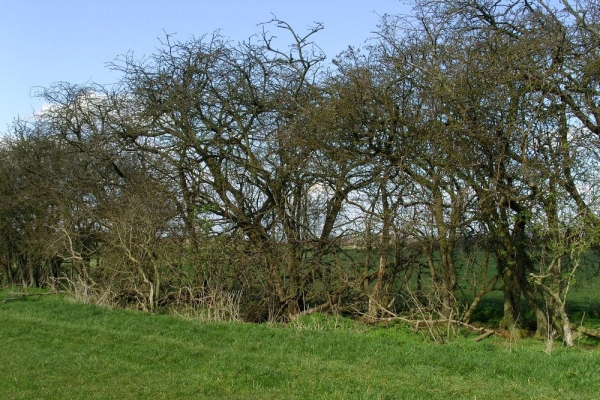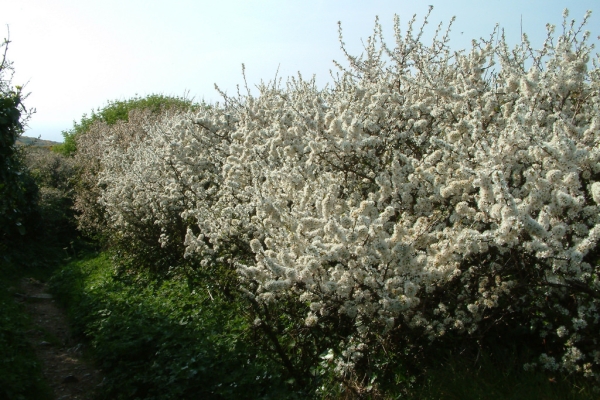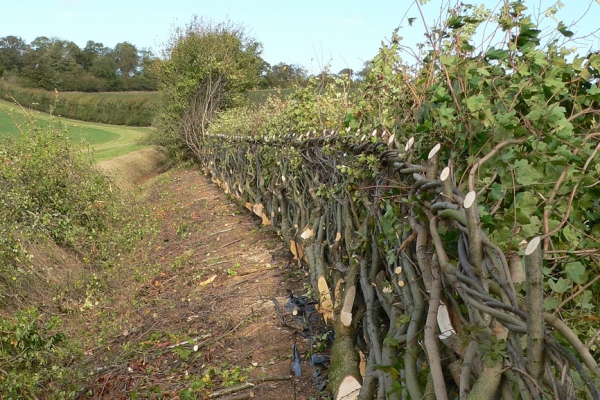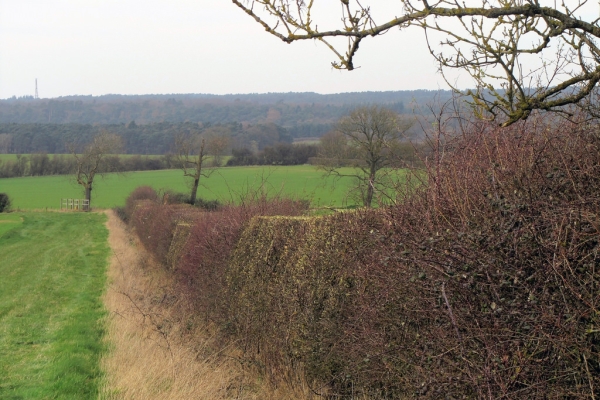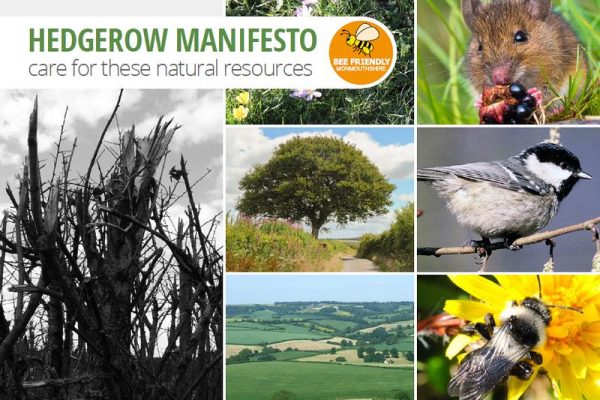Bringing hedgerows back into the farm business
For many rural communities, hedgerows are a defining feature of their local landscape, as well as a vital resource for biodiversity. But despite their importance, many UK hedgerows are in decline and on the brink of being lost. The main threat to hedges and the services that they provide are changes in management practices related to agricultural intensification and a reduction in the perceived value of hedges to farmers. The majority of hedges in the UK are now managed only by repeated annual cutting or neglected altogether. Both processes are eventually detrimental to the structural integrity of the hedgerow. So how can we encourage better management of hedges that can offer benefits to the farmer, environment and wider society?
Recently in the UK and northern Europe there has been a revival of interest in managing hedgerows to produce fuel crops. Managing hedges for woodfuel provides an incentive to encourage active management of farm hedgerows, rejuvenating the hedges and providing another income stream for the farmer, as well as producing renewable energy at a local scale. For our neighbours across the channel in France, hedgerows are still an important fuel source in some areas, producing 4.4 million cubic meters of fuel per year and accounting for 11% of the total firewood used by households in 1997. Lessons from the continent suggest that coppicing combined with whole tree wood chip production is the most cost effective management technique for woodfuel production. However there are concerns that harvesting for woodfuel may conflict with other ecosystem services that the hedgerow network supports, such as biodiversity.
Potential impacts on biodiversity through coppicing for woodfuel include altering the hedge microclimate, and changing hedge structure, plant species composition and landscape connectivity. It is expected that introducing coppice management cycles could stimulate beneficial changes in hedgerow systems. Coppicing cycles may increase the diversity of habitats within a landscape, as different species and communities are associated with different ages of re-growth. This may lead to an overall increase biodiversity. However research has shown that there are likely to be some trade-offs, for example coppicing may reduce the connectivity between patches of semi-natural habitats for species that use the hedgerows as corridors, such as dormice.
Aiming to address these concerns, the Organic Research Centre (ORC) carried out trials at two sites in southern England during winter 2014/15 as part of a European project called TWECOM. The trials examined the potential productivity of traditional boundary hedges in terms of woodfuel as well as looking into the economics of different management strategies. Alongside these trials an assessment of the impacts of hedge management for woodfuel on ecosystem services was carried out, with a particular focus on biodiversity and carbon sequestration. A protocol to measure the biodiversity impacts was developed and soil carbon stocks were measured in paired coppiced and un-coppiced hedge plots.
The hedge trials focused on coppicing and chipping as the management methods best suited to woodfuel production. Depending on hedge species, age and management history, the amount of biomass produced ranged from 40 kg to 120 kg per metre of hedge. Taller, more mature, hedges composed of lines of small trees gave the highest biomass per metre.
The unit energy cost of hedgerow woodchip produced ranged from 1.4 to 3.9 pence per kilowatt hour (p/kWh), depending on machine options and hedge type. This would seem relatively favourable when compared to the cost of other woodfuels (3.43-5.21p/kWh), fossil fuels (3.5-8.33p/kWh) and electricity (12p/kWh) (Forest Fuels 2015). Woodchip from the hedges was found to meet industry standards (P16B and G30 grades under BS EN and ÖNORM woodfuel standards respectively). This demonstrated that good quality woodfuel can be produced from traditional boundary hedgerows, which had been a concern of industry stakeholders. You can find photos and videos of the machinery trials here.
These trials highlighted that due to the limited amounts that can be sustainably harvested and the bulky nature of hedge biomass, management of hedges for woodfuel is more suited to smaller decentralised short chain energy production systems; ideally on-farm or for small district heating schemes. Knowledge gained from these machinery trials has been consolidated into a user-friendly technical guide for farmers and landowners, agricultural and forestry contractors, conservation organisations and local authorities interested in managing hedges for woodfuel. The ‘Harvesting woodfuel from hedges‘ guide focuses on the logistics and practicalities as well as the methods and machinery selection.
The Organic Research Centre has developed a biodiversity protocol alongside the practical trials. This protocol provides a simple method to assess the biodiversity status of a hedge network prior to changes in management. It gives a baseline for comparison whilst also identifying hedges that are home to key species with specific management requirements. The output gives an overall picture of the biodiversity value of a hedge network and the relative value of individual hedges within the network. Using data collected in the survey, the protocol also identifies hedges suitable for harvesting woodfuel as well as those in need of improvement, and offers general management recommendations based on different indicators.
A key conclusion from the ORC trials is that every hedge is different, and every hedge has to be assessed and managed on its own merits. The trials demonstrated that when managed correctly, the use of traditional farm boundary hedges for woodfuel can be both economically viable and beneficial in terms of energy production. It can also make sense environmentally, having positive impacts such as improving the long-term viability of hedges, connectivity in the landscape and carbon sequestration.
(This blog was written by Jo Smith, with contributions from Sally Westaway)
Editor’s comments
In addition to the resources highlighted by Jo, the ‘Wood fuel from Hedges‘ guide provides valuable guidance on producing renewable energy whilst improving hedge health.
